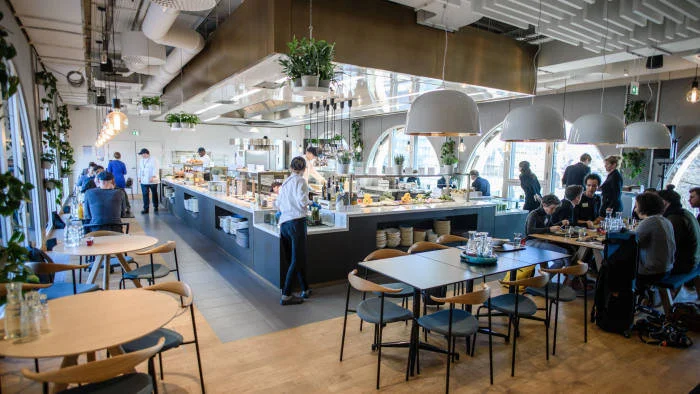Lunchtime liaisons: New designs make canteens more inviting © Brandon Stengel
Companies are putting food back at the heart of office life to attract and engage employees.
A fading relic, the office canteen was at risk of getting left behind, but expect things to change. Inspired by Silicon Valley tech giants, known for their free food and whizzy chefs, traditional companies are increasingly using food to compete with the tech sector and draw in younger workers.
From an in-house cooking school at UBS to comfy hotel lobby-style dining areas, this means making food fun.
“The war [for] talent is fierce. There’s been a generational shift — [younger people] want more from work,” says Collin Burry, a director at Gensler, the San Francisco-based design and architecture firm. With this in mind, Google pioneered the revitalising of canteens, with 300 cafés and more than 1,450 micro-kitchens at its offices in more than 50 countries.
“It was a major part of the draw to join [an] organisation so that talent felt taken care of, coddled — and that included food,” says Mr Burry.
This trend has trickled out to more traditional businesses. UBS’s new US wealth management headquarters in New Jersey, for example, runs a cooking school to help foster collaboration and teach employees new skills.
Yet not all workplaces are equal. When Steelcase, the US-based office furniture maker and design group, studied workplaces of companies where more than 100 people worked, it found that 61 per cent have canteens. India has the highest rates (82 per cent), while the UK and US are below average (58 per cent and 59 per cent respectively); Poland has the lowest at 42 per cent.


